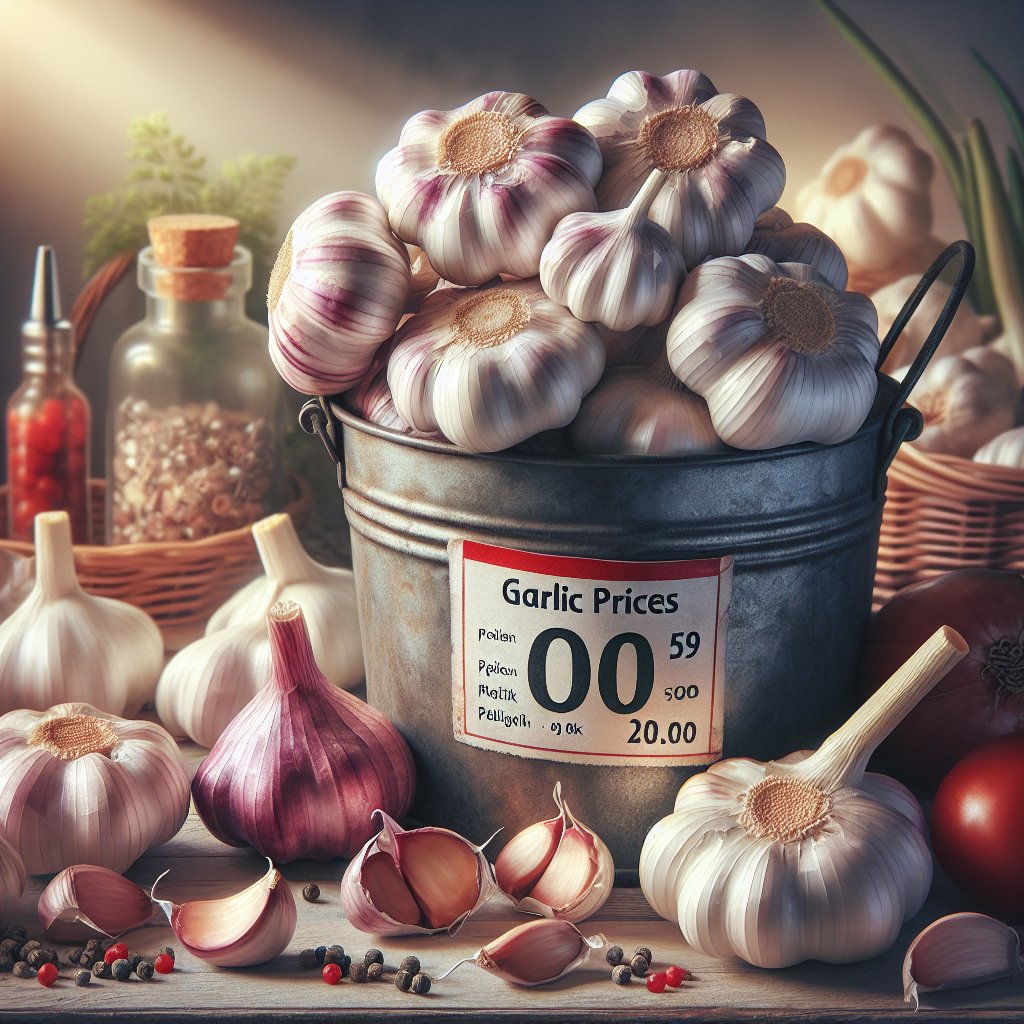The current prices of garlic in the Polish market reflect a complex interplay of factors, including supply and demand, seasonal variations, and global market trends. Garlic, a staple in many kitchens, not only serves culinary purposes but also boasts numerous health benefits, making it a sought-after commodity. Understanding the pricing dynamics of garlic can provide insights into broader agricultural trends and consumer behavior in Poland.
Factors Influencing Garlic Prices in Poland
Several key factors influence the prices of garlic in the Polish market. These include production levels, import and export dynamics, consumer preferences, and climatic conditions. Each of these elements plays a crucial role in determining how much consumers pay for garlic at any given time.
Production Levels
The volume of garlic produced in Poland significantly impacts its market price. Poland is one of the leading garlic producers in Europe, with regions like the Lublin Voivodeship being particularly known for their garlic cultivation. The production levels can vary year by year due to several reasons:
- Weather Conditions: Garlic is sensitive to climatic changes. Excessive rain or drought can adversely affect crop yields, leading to fluctuations in supply and, consequently, prices.
- Pest and Disease Management: The presence of pests and diseases can reduce the quality and quantity of garlic produced. Farmers must invest in pest control measures, which can increase production costs and, in turn, affect market prices.
- Farming Practices: The adoption of modern agricultural techniques and technologies can enhance yield. However, the initial investment in these practices can be high, influencing the final price of garlic.
Import and Export Dynamics
Poland’s position in the European Union allows for the import and export of garlic with relative ease. The dynamics of these trade activities can significantly affect local prices:
- Imports: Poland imports garlic from countries like China, Spain, and the Netherlands. The availability of cheaper imported garlic can drive down local prices, especially during off-seasons when domestic supply is low.
- Exports: Conversely, if Polish garlic is in high demand in other countries, this can lead to increased prices domestically. Export markets often pay a premium for high-quality Polish garlic, which can incentivize farmers to sell their produce abroad.
Consumer Preferences
Consumer behavior also plays a significant role in determining garlic prices. As health consciousness rises, more consumers are seeking organic and locally sourced garlic, which can command higher prices. Additionally, trends in cooking and dietary preferences can influence demand:
- Health Trends: The growing awareness of garlic’s health benefits, such as its antioxidant properties and potential to boost the immune system, has led to increased demand.
- Culinary Trends: The popularity of international cuisines that heavily feature garlic can also drive up demand, affecting prices.
Current Market Prices and Trends
As of the latest data, the prices of garlic in Poland have shown notable trends. Understanding these trends requires looking at both historical data and current market conditions.
Historical Price Trends
Over the past few years, garlic prices in Poland have experienced fluctuations due to various factors. Historical data indicates that:
- In 2020, the average price of garlic was relatively low due to a bumper harvest, leading to increased supply.
- In 2021, prices surged as adverse weather conditions affected production, resulting in a significant drop in yield.
- By 2022, prices stabilized as farmers adapted to changing conditions and improved pest management practices.
Current Prices
As of 2023, the average price of garlic in Polish markets ranges from 10 to 15 PLN per kilogram, depending on the quality and source. Organic garlic can fetch even higher prices, often exceeding 20 PLN per kilogram. The following factors are currently influencing these prices:
- Seasonal Variations: Prices tend to be lower during the harvest season (July to September) when supply is abundant.
- Market Demand: Increased demand during the winter months, when garlic is often used in traditional Polish dishes, can lead to price hikes.
- Global Market Trends: Fluctuations in global garlic prices, particularly from major producers like China, can impact local pricing.
Future Outlook for Garlic Prices in Poland
The future of garlic prices in Poland will likely be shaped by ongoing trends in agriculture, consumer behavior, and global market dynamics. Several factors will play a crucial role in determining how prices evolve:
Climate Change and Agricultural Practices
As climate change continues to impact agricultural practices, garlic farmers may need to adapt their methods to ensure consistent yields. This could involve:
- Investing in Resilient Varieties: Developing and planting garlic varieties that are more resistant to pests and diseases can help stabilize production.
- Implementing Sustainable Practices: Adopting sustainable farming practices can improve soil health and yield, potentially leading to more stable prices.
Consumer Trends and Preferences
As consumer preferences continue to evolve, the demand for organic and locally sourced garlic is expected to rise. This shift could lead to:
- Increased Premium Pricing: Organic garlic may command higher prices, benefiting farmers who can meet this demand.
- Market Diversification: Farmers may explore niche markets, such as specialty garlic varieties, to capture higher price points.
Global Market Influences
Global market trends will also play a significant role in shaping the future of garlic prices in Poland. Factors to consider include:
- International Trade Agreements: Changes in trade policies can affect import and export dynamics, influencing local prices.
- Global Supply Chain Disruptions: Events such as pandemics or geopolitical tensions can disrupt supply chains, leading to price volatility.
In conclusion, the current prices of garlic in the Polish market are influenced by a myriad of factors, including production levels, import and export dynamics, and consumer preferences. As the agricultural landscape continues to evolve, understanding these dynamics will be crucial for farmers, consumers, and policymakers alike. The future of garlic pricing in Poland will depend on how effectively stakeholders can navigate these challenges and capitalize on emerging opportunities.




